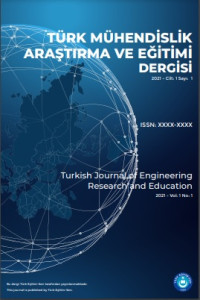Tensile Bond Strength of Reinforced Concrete Beams Reinforced with Steel Fibers
Tensile Bond Strength of Reinforced Concrete Beams Reinforced with Steel Fibers
tensile bond strength steel fibers, compressive strength, deflection,
___
- State-of-the-Art Report on Fibers Reinforced Concrete. ACI Committee 544, 1R-96. 2002.
- F. Bencardino, L. Rizzuti, G. Spadea, R.N. Swamy, “Experimental evaluation of fiber reinforced concrete fracture properties,” Compos. B. Eng., vol. 41, no. 1, pp. 17-24, January 2010.
- Aminuddin Jamerana, Izni S. Ibrahima S., Siti Hamizah Yazan, Siti Nor A. A. Rahim, “Mechanical Properties of Steel-polypropylene Fibers Reinforced Concrete under Elevated Temperature,” in The 5th International Conference of Euro Asia Civil Engineering Forum (EACEF-5), Indonesia, 2015.
- Muneer K. Saeed, Muhammad K. Rahman, Mohammed H. Baluch, “Influence of steel and polypropylene fibers on cracking due to heat of hydration in mass concrete structures,” Struct. Concr., vol. 20, no. 2, pp. 808-822, Apr. 2019.
- BS 1881; testing Concrete Part 122 – Method of determination of water absorption. British Standard Institute London 1985.
- BSEN1230-6; testing hardened concrete – Part 6: Method of determination of tensile splitting strength: Making test cylinders from fresh concrete, 2000.
- BSEN 12390-5; testing hardened concrete – Part 5: Method of determination offlexural strength, 2000.
- BS 1881; testing Concrete Part 121 – Method of determination of static modulus of elasticity in compression. British Standard Institute London 1985.
- BSEN 12390-3; testing hardened concrete – Part 3: Method of determination of Compressive strength of cubes, 2000.
- Tarig M.A. Ahmed, A. A. Tair, “The effect of polypropylene and steel fibers on the engineering properties of concrete,” in 5th World Congress on Civil, Structural, and Environmental Engineering (CSEE'20), Lisbon, Portugal Virtual Conference, October 2020, Paper No. ICGRE 198.
- ISSN: 2822-3454
- Başlangıç: 2022
- Yayıncı: Türk Eğitim-Sen
Tensile Bond Strength of Reinforced Concrete Beams Reinforced with Steel Fibers
Tarig M. A. AHMED, Abid ABUTAİR, Sokrates IOANNOU
Mevcut ve Güçlendirilmiş Bina Temel Sistemlerinin Karşılaştırılması
Mustafa Esat COŞKUN, Şenol GÜRSOY
Kaliks[4]Aren Türevi Temelli Gaz Sensör Çalışmaları
Pyroelektrik Isı Sensörü Ölçümü İçin Metal-İnce Film-Metal Cihaz Yapısının Hazırlanması
Yüzüncü Kuruluş Yılında Türkiye’nin Enerji Görünümü, Hedefleri ve Gelecek Projeksiyonu
Deniz Ergin TOPTAŞ, Tayfun FINDIK
Phragmites Australis Külü İçeren Harcın Toplam ve Kılcal Su Emmesi Üzerine Deneysel Bir Çalışma
Lelian ELKHATİB, Jamal KHATİB, Adel ELKORDİ, Seyhan FIRAT
Uçaklarda Statik Elektrik Yükü Çökelme Durumu (P-Statik) ve Statik Deşarj Çubuklarının İncelenmesi
